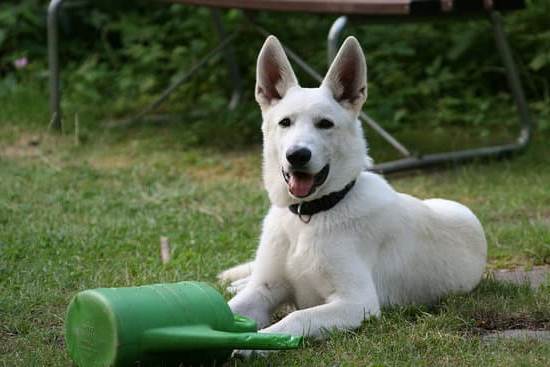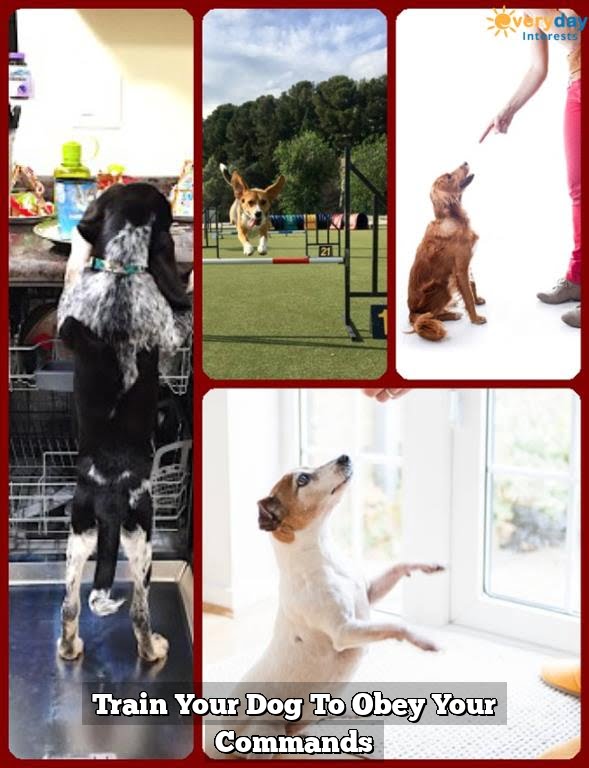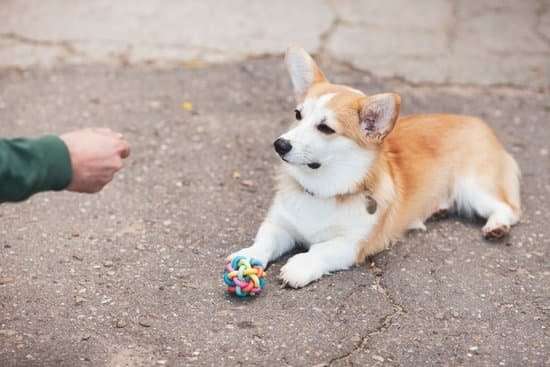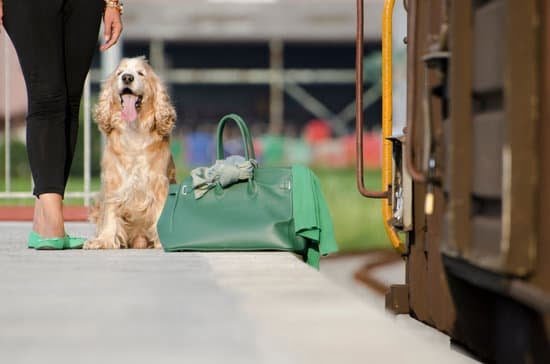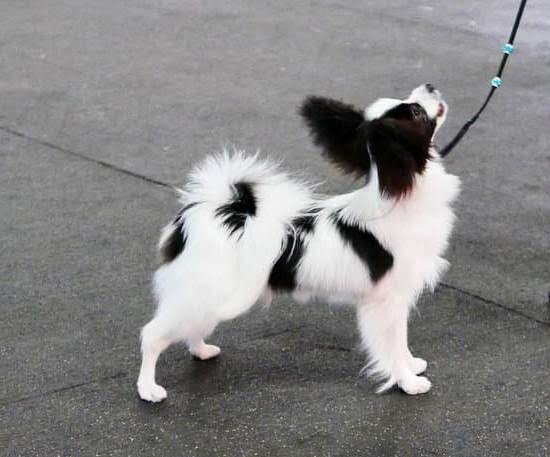Are you looking to add a fun and entertaining activity to your dog’s routine? Have you ever considered teaching your furry friend how to dance? In this article, we will explore the exciting world of training your dog to do a dance routine. From choosing the right music to choreographing a sequence that suits your dog’s style, we will walk you through the steps on how to train your dog to do a dance routine.
Teaching your dog a dance routine is not only a delightful way to bond with your pet but also provides numerous benefits. Not only does it provide mental stimulation and physical exercise for your dog, but it also strengthens the bond between you and your furry companion. Additionally, mastering new skills like dancing can boost your dog’s confidence and improve their obedience.
Before diving into training, it is essential to assess your dog’s abilities and determine which moves they can learn comfortably. Each dog is unique, so understanding what comes naturally to them will help you tailor the training process accordingly. Stay tuned as we guide you through selecting the perfect music, basic training techniques, and creating a choreography that highlights your pooch’s personality.
Choosing the Right Music
When it comes to training your dog to do a dance routine, choosing the right music is essential in setting the tone for their performance. The music you select can greatly influence the overall feel of the routine and help showcase your dog’s personality and energy. Here are some tips on how to choose the perfect soundtrack for your furry friend’s dance routine:
- Consider Your Dog’s Personality: Think about your dog’s temperament and energy level when selecting music. High-energy pups may thrive with upbeat, fast-paced songs, while more mellow dogs may do better with slower tunes.
- Match Music to Moves: Take into account the type of dance moves you plan to teach your dog. If you’re incorporating fun spins and jumps, a lively song with a strong beat can complement these actions. For more graceful movements, a softer melody might be more suitable.
- Keep it Engaging: Choose music that not only fits your dog’s style but also keeps them engaged and excited during training sessions. Look for songs with catchy rhythms or melodies that will capture your pup’s attention and make them want to move.
With the right music selected, you can enhance the training experience for both you and your dog as you work towards creating a fun and entertaining dance routine together. Remember that each dog is unique, so feel free to experiment with different genres and styles until you find the perfect musical match for your furry dancer.
Assessing Your Dog’s Abilities
Understanding Your Dog’s Physical Capabilities
Before diving into training your dog for a dance routine, it is crucial to assess your furry friend’s physical abilities. Consider factors such as your dog’s size, age, breed, and any existing health conditions. Not all dogs are suited for intricate dance moves, so it’s important to tailor the routine to your dog’s capabilities. For example, larger breeds may struggle with swift movements or jumps, while smaller breeds might excel at quick footwork.
Evaluating Your Dog’s Personality and Temperament
In addition to physical capabilities, understanding your dog’s personality and temperament is essential when determining the moves they can learn. Some dogs may have a natural inclination for dancing and performing in front of an audience, while others may be more reserved or easily distracted. Take note of how your dog responds to training sessions and adjust the routine accordingly. Positive reinforcement and patience are key when working with different personalities.
Setting Realistic Goals for Your Dog
As you assess your dog’s abilities for a dance routine, it is important to set realistic goals based on their skills and limitations. Break down the routine into manageable steps and focus on building a strong foundation before moving on to more advanced moves.
Remember that every dog is unique, so allow flexibility in the training process. With dedication and consistent practice tailored to your dog’s abilities, you can create a dance routine that showcases their talents while strengthening the bond between you and your furry companion.
Basic Training Techniques
Training your dog to do a dance routine can be a fun and rewarding experience for both you and your furry friend. In this section, we will explore some basic training techniques that will help you teach your dog essential dance moves.
Start With the Basics
Before diving into complex dance moves, it is important to start with the basics. Begin by teaching your dog simple commands such as sit, stay, and come. These foundational commands will form the building blocks for more advanced dance moves later on.
Use Positive Reinforcement
Positive reinforcement is key when training your dog to do a dance routine. Use treats, toys, and plenty of praise to reward your dog for successfully performing a move. This will help create a positive association with dancing and motivate your dog to continue learning.
Break It Down
When teaching new dance moves, break them down into small steps. For example, if you want your dog to spin in a circle, start by luring them with a treat in a small circle motion. Gradually increase the size of the circle until they are spinning on command. Breaking down complex moves into manageable steps will make it easier for your dog to learn and retain the information.
Choreographing the Routine
Choreographing a dance routine for your dog can be a fun and rewarding experience for both you and your furry friend. Before getting started, it’s important to consider your dog’s abilities, personality, and preferences to create a routine that suits their unique style. Below are some steps on how to choreograph a dance sequence that will showcase your dog’s talent and charm:
- Start by observing your dog’s natural movements and behaviors to determine what kind of dance moves they can easily perform. Some dogs may excel at spins and jumps, while others may prefer simple paw lifts or side steps.
- Consider incorporating tricks and commands that your dog already knows into the routine. For example, if your dog is good at sitting pretty or rolling over, find ways to incorporate these actions seamlessly into the dance sequence.
- Experiment with different types of music styles to see what resonates with your dog. Some dogs may respond better to upbeat pop songs, while others may enjoy dancing to classical music or even country tunes.
Creating a dance routine that highlights your dog’s strengths and personality will not only make the training process more enjoyable for both of you but also result in a show-stopping performance that showcases the special bond between you and your canine companion.
- Once you have identified the type of moves that work best for your dog and chosen the perfect music, it’s time to start putting together a choreographed routine. Begin by selecting a few key moves and transitions that flow well together.
- Use treats, toys, or positive reinforcement techniques to encourage and reward your dog when they perform each move correctly. Be patient and practice regularly to help your dog memorize the routine and build muscle memory.
- Keep rehearsals short and fun to avoid overwhelming your dog. Break down the routine into smaller segments, gradually connecting them as your pet becomes more comfortable with the steps.
By following these tips and taking into consideration your dog’s abilities and preferences, you can create a memorable dance routine that showcases their skills while strengthening the bond you share through this delightful activity.
Practice Makes Perfect
Establishing a training schedule is essential when teaching your dog a dance routine. Consistency is key to ensuring that your furry friend learns and retains the choreography you are trying to teach them. By dedicating specific time slots each day for training, you can help your dog progress steadily and build upon their skills.
When deciding on a training schedule, consider your dog’s energy levels and attention span. Short, frequent training sessions spread throughout the day may work better than one long session. This way, you can keep your dog engaged and interested in the learning process without overwhelming them. Remember to incorporate plenty of breaks for playtime and relaxation to make the training sessions enjoyable for your pet.
In addition to regular practice sessions, it’s crucial to monitor your dog’s progress and adjust the training schedule as needed. Some days may be more challenging than others, so be patient and understanding with your canine companion. Celebrate small victories along the way to boost their confidence and motivation. With dedication and a structured training plan, you’ll be amazed at how quickly your dog can learn to do a dance routine with grace and flair.
| Training Schedule Tips | Benefits |
|---|---|
| Set specific time slots each day for training | Consistency helps in retaining choreography |
| Consider dog’s energy levels and attention span | Short, frequent sessions keep the dog engaged |
| Monitor progress and adjust schedule as needed | Celebrate small victories for motivation |
Adding Props and Costumes
One way to incorporate props into your dog’s dance routine is by starting with simple items such as a hula hoop, small flags, or even a colorful scarf. These props can add depth to the routine and help emphasize certain movements.
Slowly introduce these props during practice sessions, rewarding your dog for interacting positively with them. Over time, you can increase the complexity of the props used based on your dog’s comfort level and ability to perform with them.
Costumes are another fun element to consider when enhancing your dog’s dance routine. From tutus to bow ties, costumes can bring an extra flair to the performance. When selecting a costume for your dog, make sure it fits well, allows freedom of movement, and does not cause any discomfort.
Always supervise your dog while they are wearing a costume to prevent any accidents or injuries during practice or performances. Remember that safety should always be a top priority when adding props and costumes to your dog’s dance routine.
| Props | Costumes |
|---|---|
| Hula Hoop | Tutu |
| Small Flags | Bow Tie |
| Colorful Scarf | Dress |
Showtime
Performing your dog’s dance routine can be a rewarding experience for both you and your furry friend. It is the culmination of all the hard work and training that you have put in together. To ensure a successful performance, there are several tips that you can keep in mind.
Firstly, it is essential to practice in the actual performance space as much as possible. This will help your dog become familiar with the surroundings and reduce any anxiety they may feel on the day of the performance. Additionally, practicing in different environments can help your dog adapt to different settings and distractions.
Another important tip is to maintain a positive attitude throughout the entire process. Dogs are very intuitive animals and can pick up on your emotions easily. If you are confident and excited about the routine, your dog will be more likely to mirror those feelings, resulting in a more enthusiastic performance.
Lastly, make sure to reward your dog with treats, praise, or their favorite toy after each practice session and especially after a successful performance. Positive reinforcement is key to encouraging good behavior and keeping your dog motivated. Remember that patience is crucial when training your dog to do a dance routine – every dog learns at their own pace, so celebrate small victories along the way.
Conclusion
In conclusion, teaching your dog a dance routine is not just about creating a fun performance, but it also strengthens the bond between you and your furry friend. The time spent training and practicing together creates a special connection built on trust, communication, and teamwork. As you work together to learn new moves and perfect the routine, you are not only providing mental stimulation for your dog but also fostering a deeper relationship based on shared experiences.
Through the process of training your dog how to do a dance routine, you are also enhancing their physical coordination and obedience skills. The basic training techniques involved in teaching dance moves can improve your dog’s overall responsiveness and ability to follow commands. By incorporating music, props, and costumes into their routine, you are engaging their senses and creativity, making the activity both mentally stimulating and physically rewarding for them.
Ultimately, the joy of performing with your dancing dog is a wonderful way to showcase the unique talents and personality of your furry companion. Celebrate each small achievement along the way as you progress through the training journey together.
Remember that patience, consistency, and positive reinforcement are key in successfully teaching your dog how to do a dance routine. Embrace the process with enthusiasm, love, and lots of treats – before you know it, you’ll be dancing in perfect harmony with your beloved four-legged partner.
Frequently Asked Questions
Can You Train Your Dog to Dance?
Yes, you can train your dog to dance through positive reinforcement and patience. Start by teaching your dog basic commands like sit or stand, then gradually incorporate movements that mimic dancing. Consistency and reward-based training are key to successfully teaching your dog this playful trick.
What Is the Hardest Thing to Train a Dog to Do?
The hardest thing to train a dog to do varies depending on the individual dog’s temperament and abilities. However, some common challenges include off-leash reliability, mastering complex tricks or behaviors, overcoming fear or anxiety-related issues, and dealing with distractions in different environments.
Patience, consistency, and understanding your dog’s unique needs are crucial when tackling these difficult training tasks.
How Do I Teach My Dog to Dance on My Feet?
Teaching your dog to dance on your feet involves breaking down the behavior into smaller steps and using positive reinforcement techniques. Start by getting your dog comfortable standing close to you without being anxious.
Then gradually introduce gentle movements while rewarding calm behavior with treats or praise. Practice regularly in short sessions and be patient as your dog learns to associate dancing with fun interactions with you.

Welcome to the blog! I am a professional dog trainer and have been working with dogs for many years. In this blog, I will be discussing various topics related to dog training, including tips, tricks, and advice. I hope you find this information helpful and informative. Thanks for reading!

